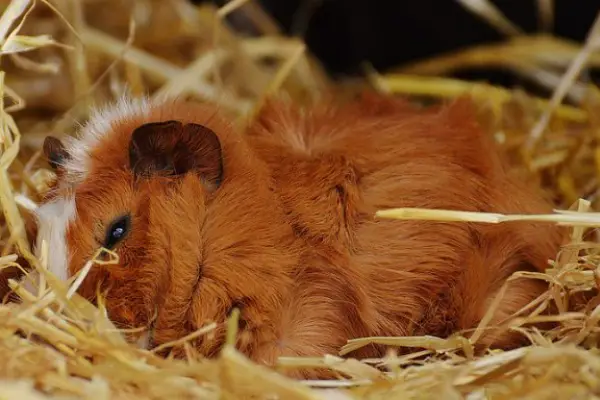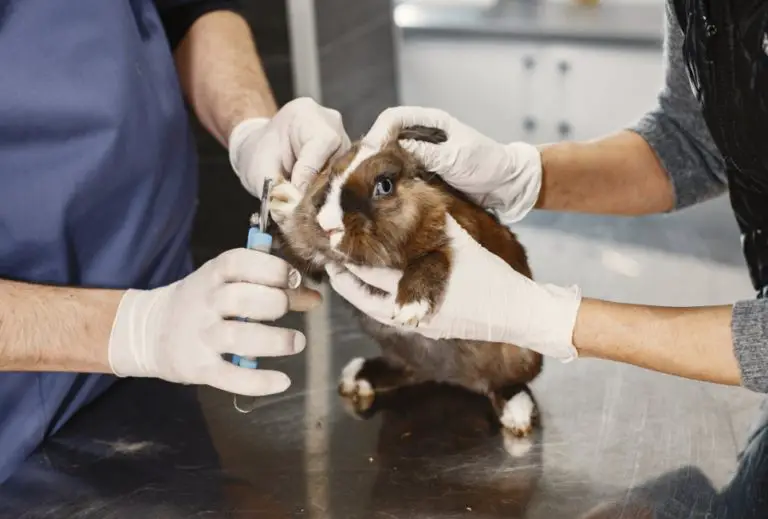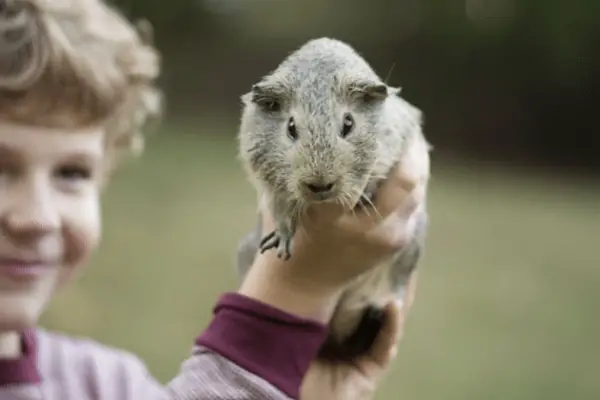9 Most Common Signs Your Guinea Pig Is Dying

We will be discussing the most common signs your guinea pig is dying which you should know and look out for as a responsible guinea pig owner.
Having your guinea pig show signs of death can be depressing, but knowing these signs and what to do ahead of time can be helpful.
Guinea pigs don’t live that long when compared to other pets that can live up to 18 years, so it’s a smart idea to keep these signs in mind.
I will keep things very simple… So keep reading!
Signs Your Guinea Pig Is Dying
The following are some of the most prevalent indicators that a guinea pig is dying: complete appetite loss, extreme weight loss, fatigue, frequent sneezing or trouble breathing, and inactivity are all symptoms to look out for.
It is critical that you take your guinea pig to the veterinarian if you observe any of the following symptoms.
Let me quickly break down these signs, so you understand better…
The following are some of the most prevalent indicators of a dying guinea pig:
1. Drastic reduction in appetite
One of the most typical indicators of a dying guinea pig is a lack of appetite, which might explain why they aren’t eating or drinking.
If a guinea pig is very unwell, it will refuse to eat and may exhibit indications of weight loss if its hunger is lost for an extended period of time.
Your Guinea pig may also refuse to drink water, which can quickly lead to dehydration.
Investing in a small animal scale or baby scale and weighing them regularly is an excellent method to keep track of how much your Guinea pig is consuming.
With a pet as little as a Guinea pig, even a modest weight reduction might cause major health problems.
2. A dying guinea pig becomes weak and less active
Guinea pigs are normally very busy at all times, and they are eager to demonstrate it when you come around their cages.
Guinea pigs, unlike hamsters and rats, are mainly diurnal, meaning they are up and running during the day and sleep at night.
A guinea pig that does not move and appears apathetic or inert might be a symptom of disease, stress, or death.
Unlike a stressed rodent, a dying guinea pig is usually unable to move or respond to stimuli from its environment.
If your guinea pig looks to be less energetic and vibrant than normal, pay close watch over the next several days.
3. A dying guinea pig develops respiratory distress
Look for signs that you’re having trouble breathing. It’s possible that your guinea pig is dying if he or she is gasping or puffing.
Noisy and heavy breathing are also signs of respiratory distress, which can be life-threatening.
If a guinea pig is dying, it will show a shift in vital signs. Its breathing may become labored, its heart rate may decrease, and its body temperature may fall.
The time it takes for a guinea pig’s capillaries to refill will also increase, and its mucous membranes will take longer than 2 seconds to restore to their normal color.
In cases of poisoning or severe oxygenation problems, the mucous membranes may seem strangely colored, white, or blue.
4. A dying guinea pig show clear changes in behavior
Keep a close eye on your guinea pig’s behavior and looks.
In individuals who are badly affected, gastrointestinal problems might induce sleepiness and a ruffled coat.
Furthermore, a guinea pig with a serious, life-threatening ailment may become immobile and refuse to eat.
Pain and vulnerability in guinea pigs might cause them to alter their behavior, making them more fearful, aggressive, and worried than usual.
5. Constant changes in weight
Because dying guinea pigs have a loss of appetite, they are prone to substantial weight changes.
Your guinea pig refusing to eat is the most prevalent and obvious sign that anything is wrong.
Food such as hay, fresh vegetables, and fruits are required for all guinea pigs.
When your guinea pigs refuse to eat them, you know something isn’t quite right.
You should take your guinea pig to the vet if he or she begins to lose weight unnecessarily.
6. A dying guinea pig develops patches of hair loss
A sick or dying Guinea pig will have a very poor coat, which may appear dull, thinning, or harsh.
They could also have spots of hair loss and irritated skin.
Keep a watch out for indications of parasitic infections including ringworm, lice, and mites.
Skin infestations are most common around the Guinea pig’s head and anus.
Your guinea pig may scratch more if she has a skin issue. This might be an indication that the guinea pig is nearing the end of its life.
This is a serious sign, and your guinea pig should be evaluated by a veterinarian.
7. A dying guinea develops eye/nose discharge
In particular, look for a runny nose, red or irritated eyes, and swollen cheeks in a dying guinea pig as a serious signs.
Guinea pigs have a tendency to have runny noses when they are sick, and they are especially prone to colds.
These infections are normally not life-threatening, but if they persist, see a veterinarian.
A sick Guinea pig will develop a crusty material around their eyes and, occasionally, their nasal passages.
Their eyes will seem hazy and dull, with a sunken appearance.
If your guinea pig gets conjunctivitis, which is a frequent ailment in the species, you may notice their eyes are inflamed and create a discharge.
8. Frequent changes in urinating and defecating
Ascertain that your guinea pig does not suffer from diarrhea as a result of consuming tainted food.
It might be an indication of a serious infection or that your guinea pig is dying. At the base of your guinea pig’s butt, look for a wet, mucus-like substance.
It’s probable that your dying guinea suffers diarrhea, as well as changes in food and activity levels.
Frequent diarrhea might be fatal to your guinea pig within 48 hours. As a result, you’ll need to move swiftly and seek advice from a veterinarian.
9. Reduction in mobility rate
A dying guinea pig is always weak and reduces strength to run around leading to a reduced mobility rate.
Your Guinea pig may be really unwell if they have problems moving and show symptoms of discomfort, such as limping or a lack of coordination.
Another symptom of discomfort and sickness is if their posture appears to be “hunched over.”
Loss of appetite means your guinea pig will have no energy to run around like before since they don’t eat again.
How to know a guinea pig is dead
The absence of a pulse, no visible breathing or movement, and loosened sphincters are the ultimate symptoms that your guinea pig is dead.
When a guinea pig is dying, its breathing becomes frenzied and choppy, and its pulse drops progressively until it is exhausted.
It’s also possible that your guinea pig suffers from tremors or has a clenched jaw.
With the information provided on this page, I strongly hope your concerns about Signs Your Guinea Pig Is Dying were answered!
Read more: 13 Top Things Guinea Pigs Hate You Should Avoid




![Can Guinea Pigs Eat Grapes [Helpful Tips] Can Guinea Pigs Eat Grapes](https://petcreeks.com/wp-content/uploads/2022/04/Can-Guinea-Pigs-Eat-Grapes.jpg)

![Can Guinea Pigs Eat Watermelon [Answered] can guinea pigs eat watermelon](https://petcreeks.com/wp-content/uploads/2022/04/can-guinea-pigs-eat-watermelon.jpg)